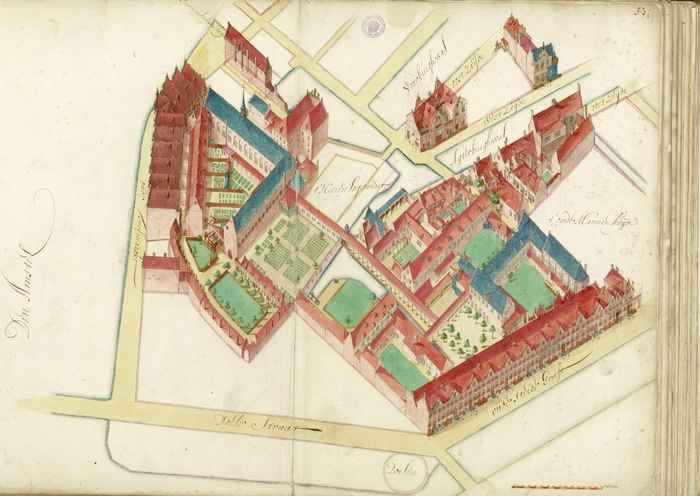Cultural-historical context
Transformations of the area over the centuries.
The southern area has undergone continuous transformation over the centuries. For example, it has a history of courtyards in the 14th and 15th centuries and hospitals or nursing homes (gasthuizen) between the 16th and 19th centuries. It was then taken into use by the UvA and the municipality. There is also a continuation of enduring themes. The complex grew organically and continues to develop right up to our time, adapting itself to modern requirements. This is in contrast to the canal area, which has hardly changed since it was first developed. This ongoing transformation is an interesting, overarching constant in history and is one of the area’s core characteristics.
Core values: Gates, courtyards, alleys
Monumental core values can also be identified as enduring themes in the University Quarter. These can be summarised as ‘Gates, courtyards, alleys’. This typifies the unique structure of the original, medieval area, in which clear boundaries are coupled with interior circulation and courtyards. This structure has been instrumental in creating the contemplative atmosphere that has been pursued here from the very beginning up to the present day.
See the cultural-historical context in chapter 4 (pp. 32-47 in Dutch)
See the complete cultural-historical argumentation (in Dutch)


